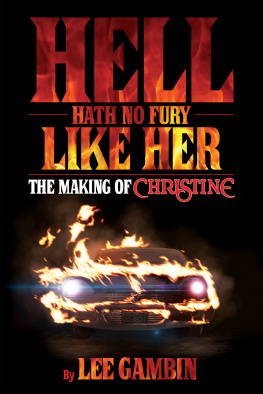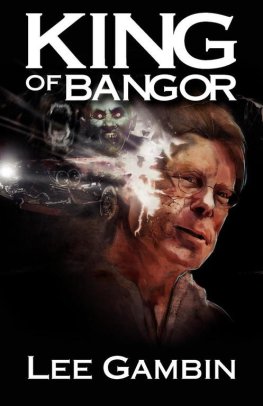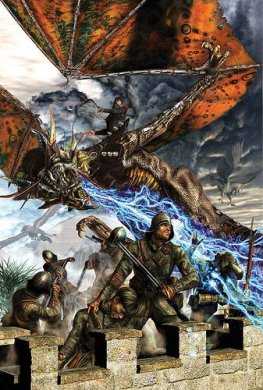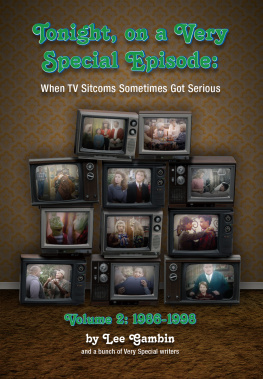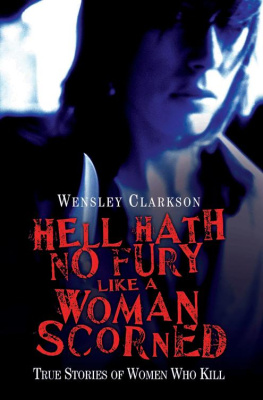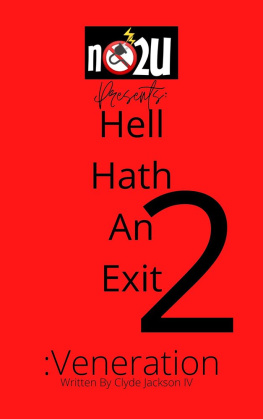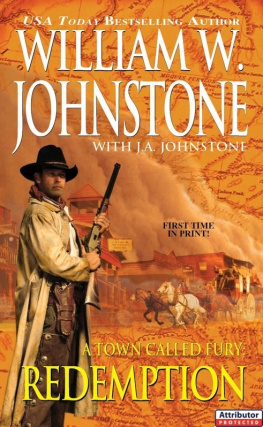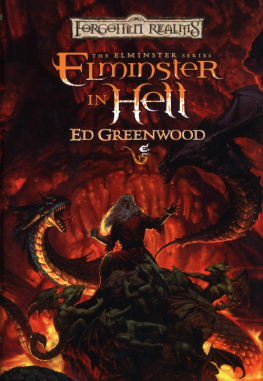Gambin - HELL HATH NO FURY LIKE HER: the making of christine (hardback)
Here you can read online Gambin - HELL HATH NO FURY LIKE HER: the making of christine (hardback) full text of the book (entire story) in english for free. Download pdf and epub, get meaning, cover and reviews about this ebook. year: 2019, publisher: BearManor Media, genre: Art. Description of the work, (preface) as well as reviews are available. Best literature library LitArk.com created for fans of good reading and offers a wide selection of genres:
Romance novel
Science fiction
Adventure
Detective
Science
History
Home and family
Prose
Art
Politics
Computer
Non-fiction
Religion
Business
Children
Humor
Choose a favorite category and find really read worthwhile books. Enjoy immersion in the world of imagination, feel the emotions of the characters or learn something new for yourself, make an fascinating discovery.
HELL HATH NO FURY LIKE HER: the making of christine (hardback): summary, description and annotation
We offer to read an annotation, description, summary or preface (depends on what the author of the book "HELL HATH NO FURY LIKE HER: the making of christine (hardback)" wrote himself). If you haven't found the necessary information about the book — write in the comments, we will try to find it.
Gambin: author's other books
Who wrote HELL HATH NO FURY LIKE HER: the making of christine (hardback)? Find out the surname, the name of the author of the book and a list of all author's works by series.
HELL HATH NO FURY LIKE HER: the making of christine (hardback) — read online for free the complete book (whole text) full work
Below is the text of the book, divided by pages. System saving the place of the last page read, allows you to conveniently read the book "HELL HATH NO FURY LIKE HER: the making of christine (hardback)" online for free, without having to search again every time where you left off. Put a bookmark, and you can go to the page where you finished reading at any time.
Font size:
Interval:
Bookmark:
The following people have been interviewed for this book, and I would like to thank each and every one of them for their wonderful contributions:
Cast:
Keith Gordon Arnie Cunningham
Alexandra Paul Leigh Cabot
William Ostrander Buddy Repperton
Malcolm Danare Moochie
Steven Tash Rich Cholony
Doug Warhit Bemis
John Richard Petersen high school student (uncredited)
Crew:
John Carpenter director/co-composer
Richard Kobritz producer
Bill Phillips screenwriter
Donald M. Morgan cinematographer
Marion Rothman editor
Virginia Katz assistant editor
Alan Howarth co-composer
William C. Carruth music editor
Roy Arbogast SFX supervisor
Kim Gottlieb-Walker on set photographer
Caroline Paul Alexandra Pauls sister/prank on John Carpenter
And the following people have contributed some critical insight, and I would like to thank them also:
Lisa Rae Bartolomei critic on sound design
Clementine Bastow critic on themes regarding gender
Adam Devlin critic on songs used throughout the film
Bill Gibson president of the Christine Car Club/collector
Elissa Rose critic on costuming
A massive thanks to the following people who provided photos for the book: Kim Gottlieb-Walker, Richard Kobritz, Steven Tash, John Richard Petersen and Bill Gibson.
Additional thanks go out to: Adam Dallas, Justine Ryan, Sean Sobczak, Chris Schwab, Cinemaniacs, Antony Botheras, Kelly Preston, Ben Ohmart, Alan Duffin, Sandy Grabman, Marsha DeFilippo, Robbie Adkins, Stephen King and christinemoviecar.com
Classic Cinema.
Timeless TV.
Retro Radio.
BearManor Media

See our complete catalog at www.bearmanormedia.com
Hell Hath No Fury Like Her: The Making of Christine
2019 Lee Gambin. All Rights Reserved.
No part of this book may be reproduced in any form or by any means, electronic, mechanical, digital, photocopying or recording, except for the inclusion in a review, without permission in writing from the publisher.
This version of the book may be slightly abridged from the print version.

Published in the USA by:
BearManor Media
PO Box 71426
Albany, Georgia 31708
www.bearmanormedia.com
ISBN 978-1-62933-393-9
Cover Design by Cover design by Darren Cotzabuyucas, DC DESIGN.
eBook construction by

Table of Contents
Cutting from the urgency of the automobile machinery supervisor honking Christines horn, we now arrive in the fictional Californian suburb of Rockbridge a major change of locale from the novel which was set in Pittsburgh, in tribute to Stephen Kings friend and sometimes collaborator, horror maestro George A. Romero. The title card also lets us know that times have changed, and we are brought into the late seventies 1978 which would make it twenty one years after Christine was born. The music transition is most interesting here as we shift from Buddy Hollys classic Not Fade Away with its warm hum and airy nuances making way to an updated version of the number from country and western artist Tanya Tucker who gives the song a grittier and more sexually charged edge. Holly recorded the number in 1957 in New Mexico with his band The Crickets and utilized the Bo Diddley beat for its percussion, having drummer Jerry Allison pound out the beat on a cardboard box. Here in Tuckers version, distorted Fenders would ring out the melody and add to it, while her vocals remain laid back and yet evoke a sense of sensual beckoning. Tuckers greatest hit would be the incredibly moving Delta Dawn which would later be covered by Bette Midler on her debut album The Divine Miss M (1972) and given an even more theatrical sensibility, and here Tuckers adaptation of Buddy Hollys masterfully composed hit is reborn for a new sound aesthetic.
This musical transition accompanies a large dark blue 1968 Dodge Charger cruising down the leafy suburban street. This is one of director John Carpenters most treasured and romantically embraced worlds the American suburb. In Halloween, he delivers a poignant and mesmerizing image of small town USA, and what he manages to do so beautifully is power it with a sense of foreboding, ethereal otherworldliness and a quietly nightmarish pulse. Here in Christine, Rockbridge is very similar to Haddonfield; a white middle class halcyon tree-lined suburb that is a perfect environment for hushed terror where a masked madman can stalk boy-crazy babysitters or a car that drives on its own can run down slacker never-do-wells. The Dodge is driven by athletic and handsome jock Dennis Guilder (John Stockwell) who drives down the picturesque street pulling up at his best friend Arnie Cunninghams house. He honks his horn (once again, the sense of urgency and beckoning comes into play) and impatiently mutters Come on Arnie which is a great telling first line if the entire movie examines Arnie Cunninghams inability to keep up with his peers, then this throwaway from Dennis is remarkably insightful. Dennis is a good looking self-possessed winner, while his friend Arnie is out of step with his generation, pathetic, nerdish and a loser. Before we are introduced to Arnie, we meet his mother Regina Cunningham (Christine Belford) who from the get go is a domineering figure. Her demeanour, her tone, her attitude and her physical presence is built up and around perpetual annoyance, frustration and seething disdain for a world that doesnt fit into her schedule and an embodiment of the overbearing mother archetype that sometimes props up in the much more rare male-centric horror. This role of the domineering matriarch in horror stems from a thorough understanding of the same kinds of women in legitimate and pop-psychology, where eternally nagging mothers who fuss over their boys result in said boy becoming either unable to relate to his peers, a fumbling mess with girls, a homosexual or and more so often in horror films a psychotic killer.
Arnie Cunningham, on arrival, is established instantly as a pathetic, skittish and atypical geek; he clumsily runs out of his house, spills garbage onto the driveway, forgets to collect his lunch and jolts towards Dennis with a painful nervousness. By the end of this scene, Regina calls out Slow down, insisting Dennis doesnt speed and this is also incredibly insightful in her role as a character desperate to have her son slow down and not grow up. It also signals the dangers of teen driving which the film embraces as a thematic centrepiece. John Carpenter paints an impressive world of driving teenagers and scrutinizes the importance of the car in the teenage males life. He also delivers Regina in an acute fashion, fastening her as the forever over protective mother to a boy that will ultimately rebel and suffer.
Another interesting aspect to this establishing scene is the moment where Regina calls out to Arnie that he has forgotten his lunch and that there is yogurt in there. Yogurt during the late seventies and even more so throughout the health conscious eighties would become a symbol of the burgeoning fitness movement made incredibly popular by everything from Jane Fondas workout videos to Olivia Newton-Johns Physical (1981) video clip. This is also another element of controlling Arnie; a way in which Regina can puppeteer her son with the food he puts into his body. Later, the yogurts symbolic visage will come to be representative of male fumbling in the dark and penal malfunction, something that Regina would not even want to think about, after all, she wants Arnie to remain a child (Try and keep it cold, theres yogurt in there!). Fumbling and creating chaos and mess is exactly what director Carpenter and screenwriter Bill Phillips weave here in visual terms, with the garbage bag tearing open and spilling onto the driveway being emblematic of Arnies inability to do a good job and the worrisome fact that this boy is completely out of step with conventional capability.
Font size:
Interval:
Bookmark:
Similar books «HELL HATH NO FURY LIKE HER: the making of christine (hardback)»
Look at similar books to HELL HATH NO FURY LIKE HER: the making of christine (hardback). We have selected literature similar in name and meaning in the hope of providing readers with more options to find new, interesting, not yet read works.
Discussion, reviews of the book HELL HATH NO FURY LIKE HER: the making of christine (hardback) and just readers' own opinions. Leave your comments, write what you think about the work, its meaning or the main characters. Specify what exactly you liked and what you didn't like, and why you think so.

